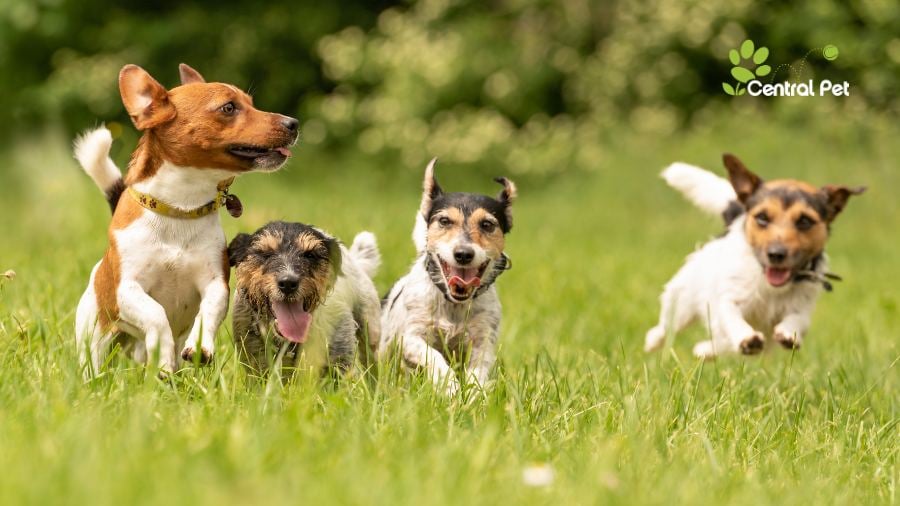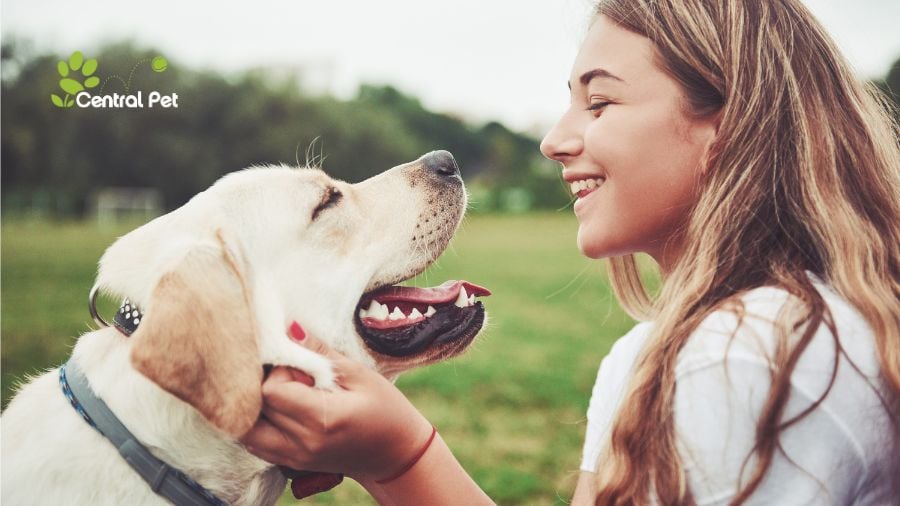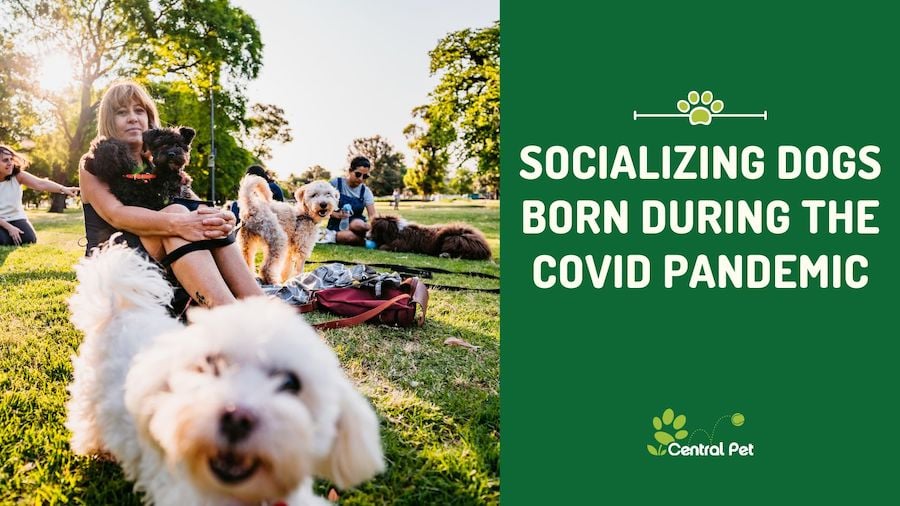Anxiety is tough on dogs, especially when owners don’t know the signs of stress in dogs. A dog will give off clues when it is feeling anxious so learning not only what the signs are but what your dog’s signs are can help you have a healthier, happier pup.
Effects of Anxiety in Dogs
Anxiety in dogs is a lot like anxiety in people. One of the most difficult ways that anxiety affects a dog is through behavior. Your anxious dog may become aggressive, bark a lot, growl, or even bite. Or it may be the complete opposite, hiding and running away when it feels threatened. You may notice that your dog has potty accidents in the house, chews things, and digs in the yard.
Now, when you see these behaviors, if you don’t know they indicate stress, you might fuss at your dog. That’s normal. BUT, if the dog is doing these things because it is already stressed, getting in trouble and getting fussed at only ADD to the stress. This can cause the behavior to get worse instead of better!
Long term stress can cause many health problems for dogs. Just like with humans, anxiety puts pressure on the organs such as the heart. It can also leave the dog feeling isolated and alone because its owner is upset so it doesn’t have the support it needs to work through the anxiety.
5 Subtle Signs of Anxiety in Dogs
Any dog can become anxious. While it is true that some breeds are a little more prone to anxiety than others, a traumatic event, lack of socialization, illness, pain, overheating, and of course separation from its owner can all be sources of anxiety.
Shivering, door dashing, not eating, more frequent urination, whining, escaping the yard, and restlessness are all common signs of anxiety in dogs that you are probably already familiar with. However, there are some signs that are not as apparent:
- Yawning – Yawning, especially frequent yawning is a sign of stress in dogs. Many times, you will see yawning accompanied by lip licking and panting. Both of these are classic anxiety signs as well.
- Excessive Licking – Dogs lick for a lot of reasons but when that licking becomes excessive, it usually means there is a problem Licking triggers the dog’s brain to release endorphins which ease anxiety and make them feel better. If you notice your dog is licking a lot, especially if it is licking hard, you could have an anxious dog. Same goes if it is licking or chewing its feet or legs.
- Whale Eye – When you can see the whites of your dog’s eyes that is called whale eye. It is a classic sign of a stressed animal. In fact, when you approach a strange dog, look at its eyes. If you can see the whites, step back. The animal is feeling anxious and may become unpredictable.
- Panting – Panting, especially when it isn’t hot, is another sign of stress or anxiety. Many dogs will pant when they are hurt or sick as well as when they are afraid. This kind of panting is called “stress panting.”
- Disconnecting – If your dog suddenly disconnects from your, another dog, or a group situation that usually means it is feeling overwhelmed or anxious. If you are playing with your dog and it suddenly walks away to goes to its bed, let it go. It is trying to manage its anxiety. Don’t try to pick it up or hug it unless it comes to you and wants to be picked up. Just let it take the break it needs.
Watch your dog and learn the clues it gives when it is stressed. This can help you identify the causes of your dog’s anxiety and let you take steps to help your dog feel better.
What Does an Anxious Dog Look Like?
There was a meme going around social media a couple of years ago that featured a small dog on a couch. A large portion of the couch was obviously wet. The caption read, “We have a little licking problem.”
People thought it was funny because they didn’t know the signs of dog anxiety. While the excessive licking is a sure sign, you could also see the whites of the dog’s eyes (whale eye), its back was hunched, and its tail was tucked. It was not a funny meme, it was sad. The dog was very, very stressed.
Another scenario. You are walking your rescue dog. You don’t know much about where it came from, but it seems to have some training. However, a firetruck passes you and your dog drops to the ground. It won’t get up, won’t walk, won’t do anything. It might be shivering or have its head down or it might be whining. The dog is anxious.
Or maybe you are at home with your dog – who is a barker. It barks at everything. One minute it will be laying beside you and the next minutes it is packing back and forth, barking. It may pant a little or come back and lick you, the furniture, a toy, anything. That is a very anxious animal.
Tips for Helping Your Anxious Dog
Even though your dog can’t talk and tell you what is wrong, you can still see the clues it gives you. When you realize that your dog suffers from anxiety, there are some things you can do.
- Stay calm – Your dog takes it cues from you, especially if you are bonded. If you are upset or stressed your dog will likely be as well. Try to stay calm and avoid yelling. You want to be as low key and non-aggressive as possible.
- Provide a safe space – Giving your dog its own kennel or bed is an excellent way to combat anxiety. Put a blanket over the kennel to make it more like a cave. Also, try to put the bed or kennel in a place that is away from the busy areas of the house, where it is quiet and not so much activity. When your dog gets overwhelmed or stressed, quietly, calmly direct it to go to its space. Picking up the dog may just add to the overstimulation so if you can talk to it and encourage it to get to its safe place that is even better.
- Find the cause – Some dogs are natural high strung, but sometimes a dog has a reason to be anxious. Pay attention to your dog, your surroundings, and what your dog was doing when it became anxious. It could be a sound, a situation, or any number of things. Then try to minimize the cause or eliminate it.
- Doggy daycare – Doggy daycare is a great way for a timid dog to gain confidence around other dogs. It can also help ease separation anxiety. Most importantly, though, doggy daycare helps with socialization and for dogs that is vital – especially for the dog that struggles with anxiety.

- Know when to back off – Sometimes, you just need to take a break. When your dog starts signaling that it is feeling anxious, know what signs mean it just needs to be left alone. Step back, look away, don’t try to pet it or talk to it, just let it go to its safe space and check out for a bit. Too often dog owners will try to pick up the nervous pooch and hug it or comfort it. They mean well, but those things meant to help could be increasing the anxiety. Let your dog guide you on what it needs to ease its anxiety.
- Training – A confident dog is often a less anxious dog. Training builds confidence in dogs. Find a good dog training program or work with your dog on basic commands every day. Watch for signs of stress or boredom. That’s when it’s time to take a break.

In some cases, your veterinarian may give your dog some medication to help with the anxiety, especially if it seems to dominate your dog’s life. Staying in a constant state of anxiety isn’t good for anyone, canine or human. 
At Central Pet we are sensitive to the needs of our anxious guests and try to help ease their stress with quiet, low sensory spaces where they can take a break when necessary. Contact us today to learn more about our doggy daycare, boarding, grooming, and training classes. We treat your pet like family!






